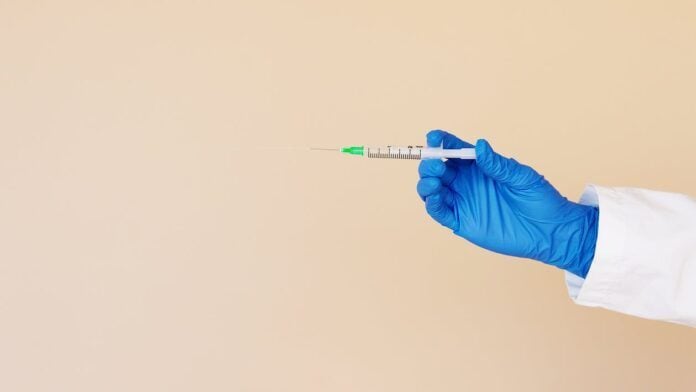Injecting air into a vein, medically referred to as air embolism (or gas embolism), is a common fear among anabolic steroid users. Rather than ease into this, let me put your worries to rest right upfront.
Injection of 1-3 ml. of air into a vein is not lethal, in fact, it may be even harmless. Human case reports suggest that injecting more than 100 mL of air into the venous system at rates greater than 100 mL/s can be fatal. The likelihood of you doing this accidentally is slim to none. Some people debate this argument back and forth due to a simple lack of terminology. Are we talking about injecting air into a vein or injecting air into an artery?
Injecting into a vein may not be an issue, heck every dope head shoots meth, heroin, and god knows what other garbage in their veins. Drug addicts shoot up in their veins all the time, yet most of them simply die of drug overdoses. Imagine throughout the world how many flu shots and vaccines are given every year. Accidental death by injection is never discussed anywhere. Additionally, there is not much discussion regarding air or gas embolism in regards to drug addicts who regularly shoot up. That in itself shows you just how resilient the human body is.
Injecting air into an ARTERY is a different case!
Let me be clear, this does not guarantee that injecting air into a vein is 100% safe either. When air enters the veins, it travels to the right side of the heart, and then to the lungs. This can cause the vessels of the lung to constrict, raising the pressure in the right side of the heart]. If the pressure rises high enough in a patient who is one of the 20% to 30% of the population with a patent foramen ovale, the gas bubble can then travel to the left side of the heart, and on to the brain or coronary arteries. Such bubbles are responsible for the most serious of gas embolic symptoms.
Trauma to the lung can also cause an air embolism. This may happen after a patient is placed on a ventilator and air is forced into an injured vein or artery, causing sudden death. Breath-holding while ascending from scuba diving may also force lung air into pulmonary arteries or veins in a similar manner, due to the pressure difference.
Air can be injected directly into the veins either accidentally or as a deliberate act. Examples include misuse of a syringe, failure to meticulously remove air from the vascular tubing of a hemodialysis circuit, and industrial injury resulting from the use of compressed air. However, the amount of air that would be administered by a single small syringe is, in most cases, not enough to suddenly stop the heart, nor cause instant death. However, such bubbles may occasionally reach the arterial system through a patent foramen ovale, as noted above, and cause random ischemic damage, depending on their route of arterial travel.
A large bubble of air in the heart, such as 100 ml. (as can follow certain traumas in which air freely gains access to large veins) will be presented with a constant “machinery” murmur. It is important to promptly place the patient’s head down and on their left side. This position keeps a left-ventricular air bubble away from the coronary artery ostia (which are near the aortic valve) so that air bubbles do not enter and occlude the coronary arteries (which would cause a heart attack).
Left side positioning helps to trap air in the non-dependent segment of the right ventricle (where it is more likely to remain instead of progressing into the pulmonary artery and occluding it). The left side position also prevents the air from passing through a potentially patent foramen ovale (present in as many as 30% of adults) and entering the left ventricle, from which it could then embolise to distal arteries (potentially causing occlusive symptoms such as stroke).
Although I have added some medical views on this matter, bear in mind that when they refer to “air” or “gas”, they are basing this on 100ml. Here are some other reports based on facts. Please pay very close attention because another factor to consider is are referring to injecting air into a vein? Or injecting air into an artery?
You need to know a few things about this. The facts are listed below:
- Small air bubbles will not kill you.
- Injecting air in veins is less effective than injecting air in arteries.
- 20 CC of air injected in artery can be lethal. But it is difficult to actually poke your artery with a syringe. A 5ml syringe will mean you would have to poke yourself at least 4 times.
- If you inject a vein with 20 cc of air is likely not going to kill you. You need at least 5 to 10 times of air as compared to artery. This means volume of air must be somewhere between 100-200 cc. Now count how many times you need to poke yourself with a 3ml syringe for that to happen.
In conclusion, if you are an anabolic steroid user who constantly fears injecting himself with a little air, you can relax. Personally, I’d much rather have my doctor give me my shots, but the odds of someone falling prey to “accidental death by injection”……..nearly non-existent. Now stop being a sissy and get to it!


